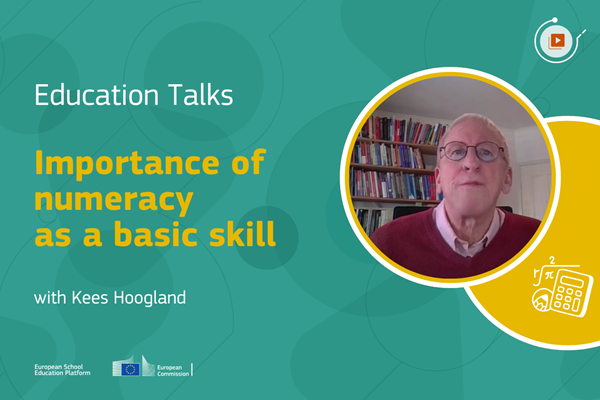Education Talks: Importance of numeracy as a basic skill

What is numeracy?
It is good to know that the term ‘numeracy’ is a contraction of ‘numerical literacy’. Numeracy refers to functional mathematics as it is applied in everyday life and professional settings. Given its close connection to daily practice, numeracy is increasingly understood as a social practice, rather than merely an academic subject. It is not primarily about performing basic pen-and-paper calculations with numbers and fractions, but rather about interpreting numerical information in everyday contexts —whether in tables, diagrams, or graphs— engaging in problem-solving with numbers, making decisions based on numerical data, and reasoning with numbers, among other activities.
Evolving role of numeracy and mathematics
Mathematics education must keep pace with societal changes in our increasingly digitalised and mathematised world. In addition to potentially pursuing other objectives, mathematics education curricula worldwide claim to equip students with the skills necessary to navigate quantitative situations. However, in primary and secondary education, the shift towards a more numeracy-focused approach has been slow. A readily achievable step would be to make explicit how mathematics is applied in other subjects and in the daily lives of students and their families.
More challenging, however, is reducing the emphasis on pen-and-paper procedures, adopting modern tools instead, and engaging students in reasoning about the outcomes. Equally complex is the task of transforming final examinations and placement tests to better reflect the use of numeracy in realistic, everyday contexts.
PISA and mathematics
Let me begin by stating that, in my opinion, students today have the same potential as they did 20 or 30 years ago perhaps even more so, given their easy access to vast sources of information, calculation and communication tools. It is important to remember that PISA measures mathematical literacy, which is conceptually very similar to numeracy. PISA defines mathematical literacy as the ability of students to formulate, employ, and interpret mathematics in a variety of contexts. This includes reasoning mathematically, as well as using mathematical concepts, procedures, facts, and tools to describe, explain, and predict phenomena.
Additionally, PISA employs a representative sample of students, ensuring that all performance levels are accounted for. Therefore, PISA scores can serve as indicators of both the modernity and equity of national educational performances. Low PISA scores should thus be seen as a warning sign, indicating the need to invest more time and resources in all students, focusing on inclusive approaches and relevant content that can be applied in everyday life and professional settings. Furthermore, incorporating modern tools and giving greater attention to data science and related topics is a logical and necessary step forward.
Challenges in teaching and assessing numeracy
Two themes are important in educational challenges ahead. The first is regarding content. How can we strike a better balance between the use of modern mathematical tools and traditional pen-and-paper procedures in arithmetic and algebra both in teaching as in assessing?
The second is regarding educational policies. How can we shift away from the use of mathematics education as a selection tool, as a gatekeeper, and as a source of math anxiety and aversion? How can we transform mathematics education into a truly inclusive system that equips all students with the skills to manage their lives and succeed in their future professions? Those are really the challenges, I think, for our education system and schools all over the world.
Solutions in teaching and assessing numeracy
Successful numeracy education, of course, addresses knowledge and skills, but always within context and increasingly through the use of higher-order skills, such as critical thinking, reasoning with numbers, decision-making, and so forth. Equally important, successful numeracy education recognises the significant role played by dispositions, including math anxiety, as well as issues of equity and inclusiveness.
Especially the change in addressing more higher-order skills is necessary for every student, because every student will encounter quantitative matters in their daily lives —now and in the future— whether in finance, health, media, citizenship, or in their everyday activities at home and at work. Our world has become more mathematised and every student should be educated and equipped to cope with those situations.
Additional information
-
Education type:School Education
-
Target audience:TeacherStudent TeacherHead Teacher / PrincipalTeacher EducatorGovernment / policy makerResearcherParent / Guardian
-
Target audience ISCED:Primary education (ISCED 1)Lower secondary education (ISCED 2)Upper secondary education (ISCED 3)
